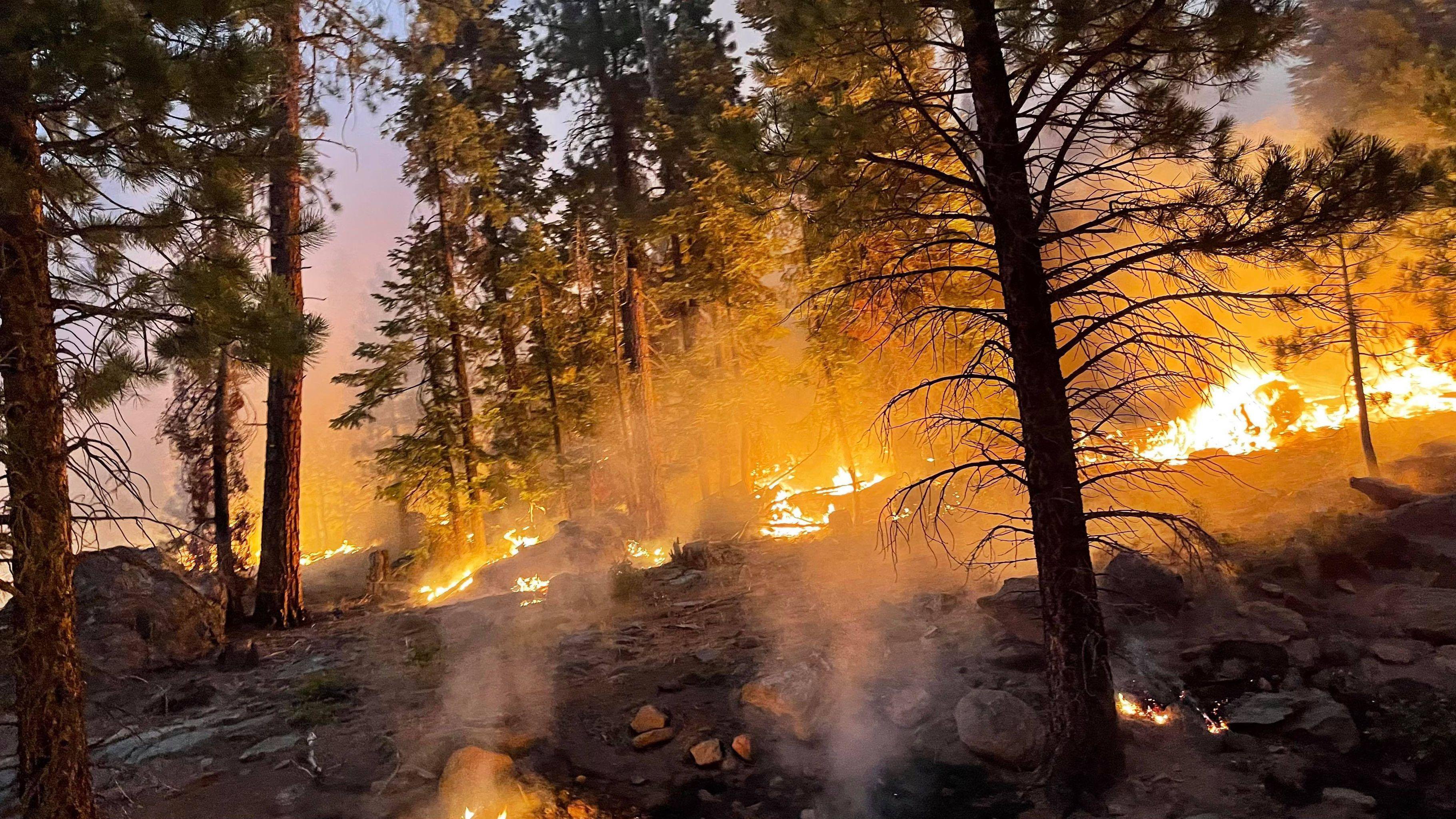Despite Wildfires and Record Heat, Bonneville Kept Power Flowing
- September 17, 2021
- John Harrison

The Summer of Extremes – 2021 – brought the highest temperatures ever recorded in the Pacific Northwest, and drought-enhanced wildfires that scorched hundreds of thousands of acres in Northeastern California and South Central Oregon. Wildfires burned to within four miles of three 500,000-volt electricity transmission lines linking the Northwest and Southwest.
Those lines remained energized, if at levels lower than normal, and only one major transmission line sustained a brief outage. Now, with fall approaching and the advantage of hindsight, the Bonneville Power Administration, the largest operator of high-voltage transmission in the Northwest, is studying its response to the hot weather and fire emergencies for learned lessons that that will help its response to wildfire future emergencies.
Michelle Cathcart, Bonneville’s vice president for transmission system operations, reviewed the summer heat and fire emergencies at the Council’s September meeting. She said the agency’s focus is on ‘hardening’ the system against future assaults by heat and fire. In response to the disastrous 2018 Camp Fire in California, Bonneville began looking in depth at its wildfire mitigation planning, she said.
After the Labor Day fires in 2020, Bonneville initiated a public safety power shutoff protocol this summer to de-energize lines when thick smoke might cause a line to ground out and spark a fire.
“When we get to these really extreme risk days, those days where we have wind above 60 miles per hour and red-flag warnings in areas of our system, then we pull together our public safety power shutoff decision-making team,” she said. “The PSPS is a measure of last resort, but it is a prudent step that we have in our wildfire mitigation plan in order to mitigate the risk of fire being ignited from our system.”
This summer, there was one public safety power shutoff. That was during the enormous Bootleg Fire, and it lasted about five hours. Of many transmission interruptions during the summer, the Bootleg Fire was “the most impactful,” she said. Multiple transmission lines in the same north-south corridor tripped off for brief periods during the fire. As the fire approached the three 500,000 volt lines of the AC Intertie, Bonneville derated them by nearly half.
“It was a good thing we did because a few hours later all three of those lines relayed out of service,” Cathcart said. “We were able to withstand that outage because we had already decreased the flows on the Intertie, in coordination with Portland General Electric and PacificCorp [the other owners of the lines],” she said.
Cathcart said transmission line controls also are adjusted in response to the possibility of fire. Bonneville changes automatic relay systems during the fire season. When a relay trips open, halting the flow of power, the relays are equipped to close automatically and re-energize the line. During fire season this function is disabled so that a relay doesn’t close and create a fire risk.
These are all strategies to ‘harden’ the transmission system, she said. Bonneville has its own weather bureau, and during the fire season the transmission and weather groups coordinate on forecasts of wind, temperature, and fire risk.
These systems and strategies were put to the test in another way this summer, too, when a ‘heat dome’ settled over the Northwest in late June and early July and drove daytime temperatures to unheard-of extremes. Portland hit 115 degrees , as did Kennewick in south-central Washington.
As the temperature rose, so did demand for power, presumably for air conditioning. Bonneville restricted system maineance to protect crews who work outside, and flushed water over the radiator fins of stressed transformers, where internal temperatures approached 200 degrees Fahrenheit. Overheated transformers can’t carry as much electricity as they can at normal temperatures. The usual summer north-south flow of power from the Northwest to the Southwest reversed as demand soared and more power than usual was imported from the Southwest. Much of that was solar power from California, particularly on June 28 and 29, the hottest days.
“There was extreme heat across our system for multiple days,” Cathcart said. “We identified the Tri Cities as having the biggest risk on our system. That’s where the highest temperatures were for the longest time. Watering some transformers in that area helped protect the equipment from failing.”
She said conservation messages by the City of Richland proved critical to keeping the power flowing.
“Before it began, the city sent messages to conserve energy, and we reiterated them,” she said. “On June 28 they sent a message to curtail energy use, and that was very successful, very helpful, and as a result we did not have to shed load. The messaging and the actions were a big part of that, as was the availability of Ice Harbor Dam to support load at the time.”


